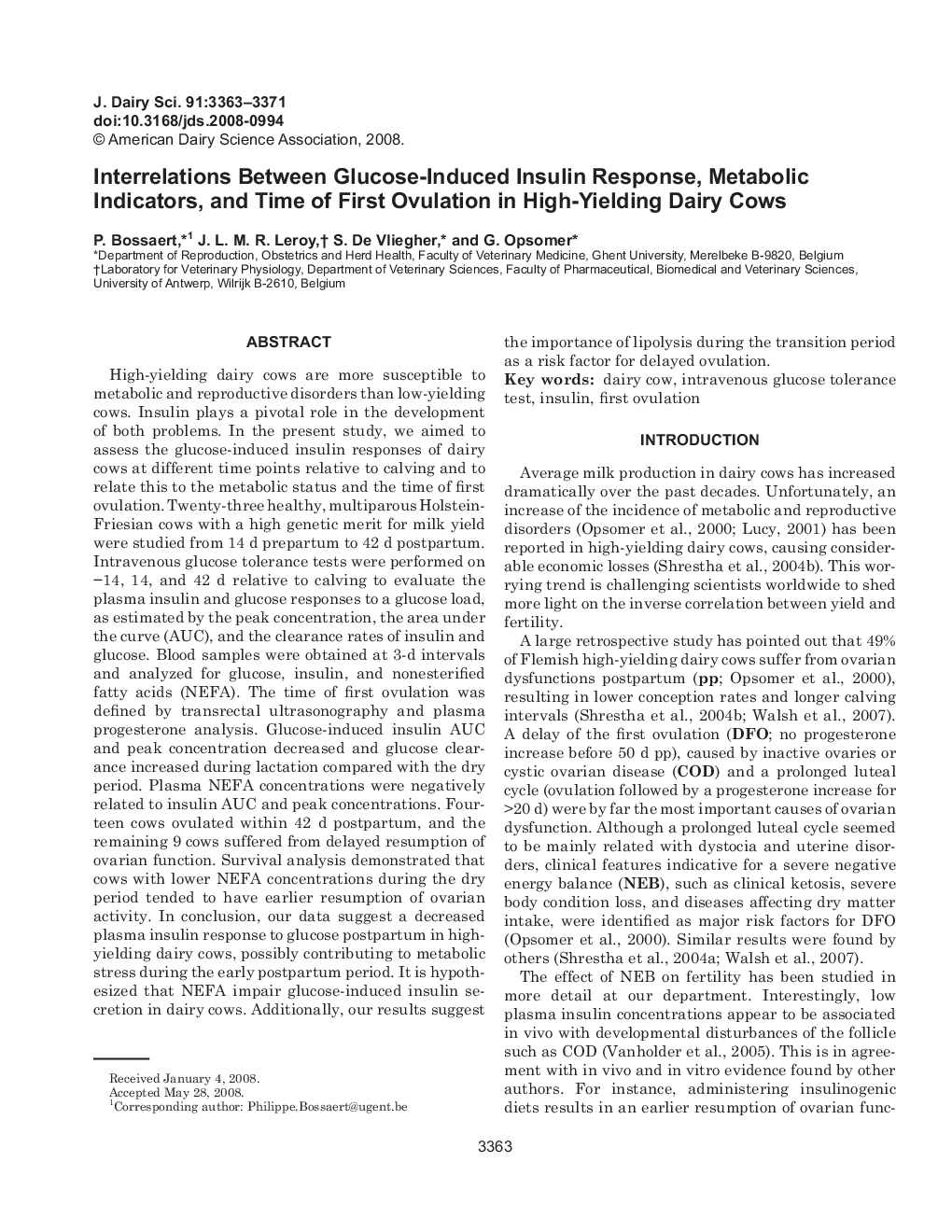| کد مقاله | کد نشریه | سال انتشار | مقاله انگلیسی | نسخه تمام متن |
|---|---|---|---|---|
| 2439512 | 1108099 | 2008 | 9 صفحه PDF | دانلود رایگان |
عنوان انگلیسی مقاله ISI
Interrelations Between Glucose-Induced Insulin Response, Metabolic Indicators, and Time of First Ovulation in High-Yielding Dairy Cows
دانلود مقاله + سفارش ترجمه
دانلود مقاله ISI انگلیسی
رایگان برای ایرانیان
کلمات کلیدی
موضوعات مرتبط
علوم زیستی و بیوفناوری
علوم کشاورزی و بیولوژیک
علوم دامی و جانورشناسی
پیش نمایش صفحه اول مقاله

چکیده انگلیسی
High-yielding dairy cows are more susceptible to metabolic and reproductive disorders than low-yielding cows. Insulin plays a pivotal role in the development of both problems. In the present study, we aimed to assess the glucose-induced insulin responses of dairy cows at different time points relative to calving and to relate this to the metabolic status and the time of first ovulation. Twenty-three healthy, multiparous Holstein-Friesian cows with a high genetic merit for milk yield were studied from 14 d prepartum to 42 d postpartum. Intravenous glucose tolerance tests were performed on â14, 14, and 42 d relative to calving to evaluate the plasma insulin and glucose responses to a glucose load, as estimated by the peak concentration, the area under the curve (AUC), and the clearance rates of insulin and glucose. Blood samples were obtained at 3-d intervals and analyzed for glucose, insulin, and nonesterified fatty acids (NEFA). The time of first ovulation was defined by transrectal ultrasonography and plasma progesterone analysis. Glucose-induced insulin AUC and peak concentration decreased and glucose clearance increased during lactation compared with the dry period. Plasma NEFA concentrations were negatively related to insulin AUC and peak concentrations. Fourteen cows ovulated within 42 d postpartum, and the remaining 9 cows suffered from delayed resumption of ovarian function. Survival analysis demonstrated that cows with lower NEFA concentrations during the dry period tended to have earlier resumption of ovarian activity. In conclusion, our data suggest a decreased plasma insulin response to glucose postpartum in high-yielding dairy cows, possibly contributing to metabolic stress during the early postpartum period. It is hypothesized that NEFA impair glucose-induced insulin secretion in dairy cows. Additionally, our results suggest the importance of lipolysis during the transition period as a risk factor for delayed ovulation.
ناشر
Database: Elsevier - ScienceDirect (ساینس دایرکت)
Journal: Journal of Dairy Science - Volume 91, Issue 9, September 2008, Pages 3363-3371
Journal: Journal of Dairy Science - Volume 91, Issue 9, September 2008, Pages 3363-3371
نویسندگان
P. Bossaert, J.L.M.R. Leroy, S. De Vliegher, G. Opsomer,